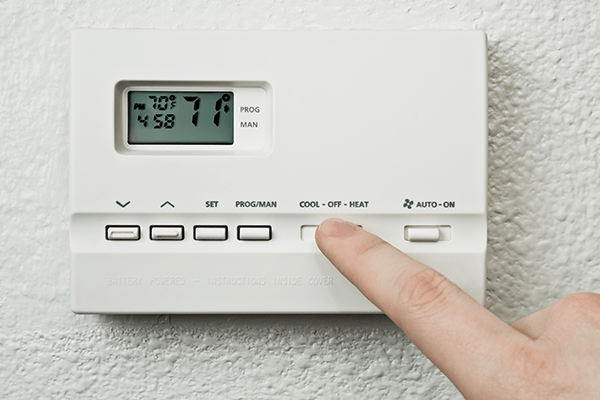Your thermostat may be a problem if your home does not cool down on a hot summer day or warm-up on a chilly winter night. There are a number of thermostat difficulties that might cause your HVAC system to malfunction, despite the fact that we frequently blame the HVAC system first. We realize how difficult it may be to pinpoint the specific cause of your home’s discomfort or climatic inefficiency. Therefore, we have compiled this guide to assist you in determining if your thermostat is malfunctioning and how to fix it.
- YOUR HVAC SYSTEM WON’T TURN ON
The thermostat is the primary control for your home’s heating and cooling systems. If you are unable to activate your air conditioner, heat pump, or furnace using the thermostat, you can presume that these systems have failed. Fortunately, this seemingly difficult issue is frequently an indication that your thermostat has reached the end of its useful life or experienced an unforeseen breakdown. The good news is that changing a defective thermostat is far less expensive than replacing a heater or air conditioner.
- YOUR AIR CONDITIONER OR HEATER IS CONSTANTLY RUNNING
In the same way that your thermostat is the primary control for activating your heating and cooling systems, it is also the component that instructs these systems to shut down. Your thermostat will notify your furnace or air conditioner to turn off once the appropriate interior temperature is attained. If chilled air continues to flow into the home after the inside temperature has become unmistakably cool, you may need to adjust the wireless smart thermostat. If this component cannot reliably read interior temperatures, it will be unable to aid in the regulation of temperature.
- INCORRECT THERMOSTAT READING
Correct thermostat readings prevent your interior areas from being too hot or chilly. When your thermostat begins to display inaccurate temperatures, it may be time to consider purchasing a replacement.
Using a portable indoor thermometer, verify the accuracy of the temperature measurement. If the readings are incorrect, the sensor on the thermostat may be faulty. The issue might be caused by old age, a manufacturing flaw, or improper use.
- SUSPICIOUSLY HIGH UTILITY BILLS
Like the majority of people, you’re probably always searching for methods to reduce your energy expense. A poorly performing HVAC system might have the opposite impact. You discover that your energy bill is greater than normal.
Frequently, the thermostat is to blame. A thermostat that misreads the temperature will often cause your HVAC system to overwork. The greater the number of cycles per hour, the greater the power consumption.
During your routine HVAC tune-up, your technician will inform you whether a new thermostat is required to resolve the issue.
- CONSTANT TEMPERATURE VARIATIONS
A defective thermostat often has difficulty keeping its settings. It may alter temperature settings continually without notice.
As a test, try reducing the thermostat settings and observe the results. If the issue persists, have a professional inspect the thermostat.
- THE THERMOSTAT IS TOO OLD
Your thermostat, like all other devices, will ultimately become obsolete. The average lifespan of a thermostat is 10 years. As newer, more efficient thermostats join the market, though, you may have to replace yours sooner.
You may wish to replace a non-programmable thermostat with a programmable alternative, for instance. The latter type of thermostat is far superior to the obsolete non-programmable variety. Programmable thermostats are equipped with innovative technology that offers a vast array of programming choices.
- THE THERMOSTAT DOES NOT RESPOND TO ALTERED SETTINGS
As soon as you modify the temperature settings, the thermostat must respond immediately. Typically, as you make these adjustments, you will hear minor clicking sounds, and your HVAC system will instantly begin operating.
If your HVAC system does not turn on after making these adjustments, it likely has a problem and should be replaced.
- YOUR HVAC SYSTEM SHORT CYCLES
One of the primary reasons for upgrading obsolete thermostats is short cycling. The issue occurs when the system turns off prematurely, failing to finish a complete cooling or heating cycle. If this continues to occur, it is likely time to replace the thermostat.
The Advantages of Modernizing Your Thermostat
Whether you have an old thermostat that is rapidly approaching the end of its useful life or one that lacks the features of modern thermostat advances, changing it is a fantastic way to save money, increase home comfort, and prevent annoying thermostat-related issues. Programmable wireless smart thermostats raise the bar for individualized heating and cooling. These gadgets can heat or cool your house shortly before your arrival. They can synchronize all air conditioning and heating systems to your specified timetable. In addition, they enable you to lower your carbon footprint and avoid unnecessary wear – and – tear on your HVAC system.

